Mobile Shopping Carts: Features, Benefits, and Implementation for Smart Stores
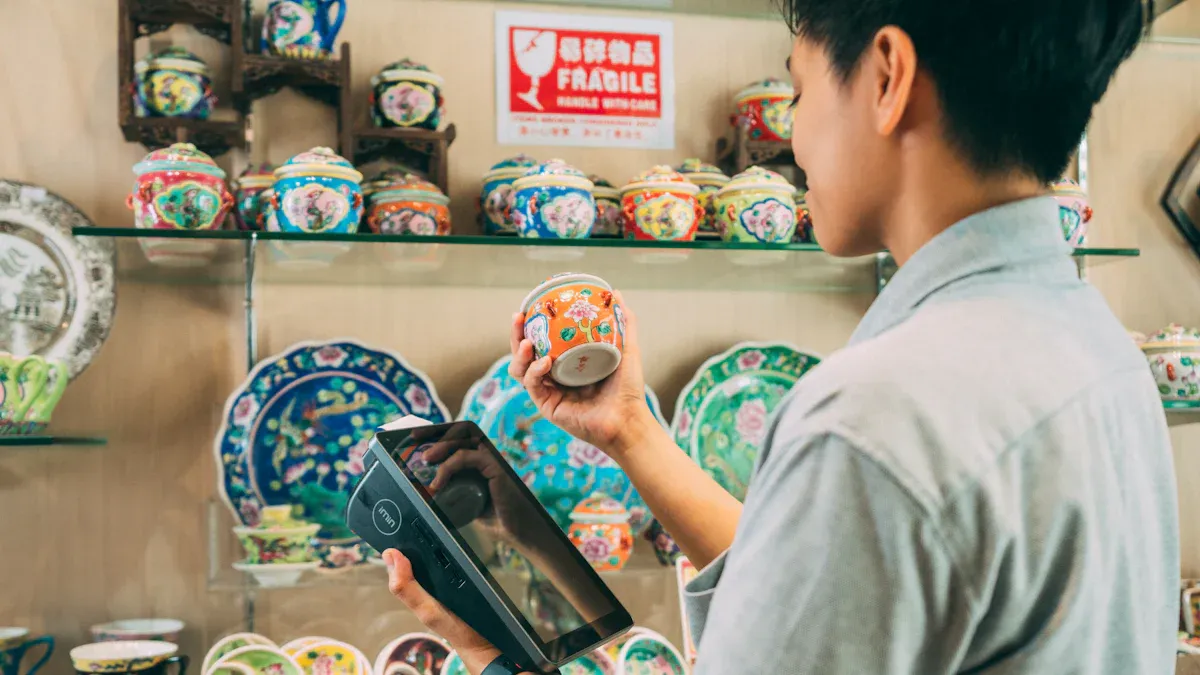
Mobile shopping carts use smart technology to change the way you shop for grocery items. These carts bring digital tools into your weekly grocery shopping, helping you track spending and making the shopping experience smoother. Many retail stores now use features like AI, IoT, and real-time inventory tracking to help every customer enjoy a faster and more personal experience.
Metric/Aspect | Data/Value |
|---|---|
Market Size 2024 | |
Projected Market Size 2033 | USD 15.10 billion |
CAGR (2025-2033) | 25.8% |
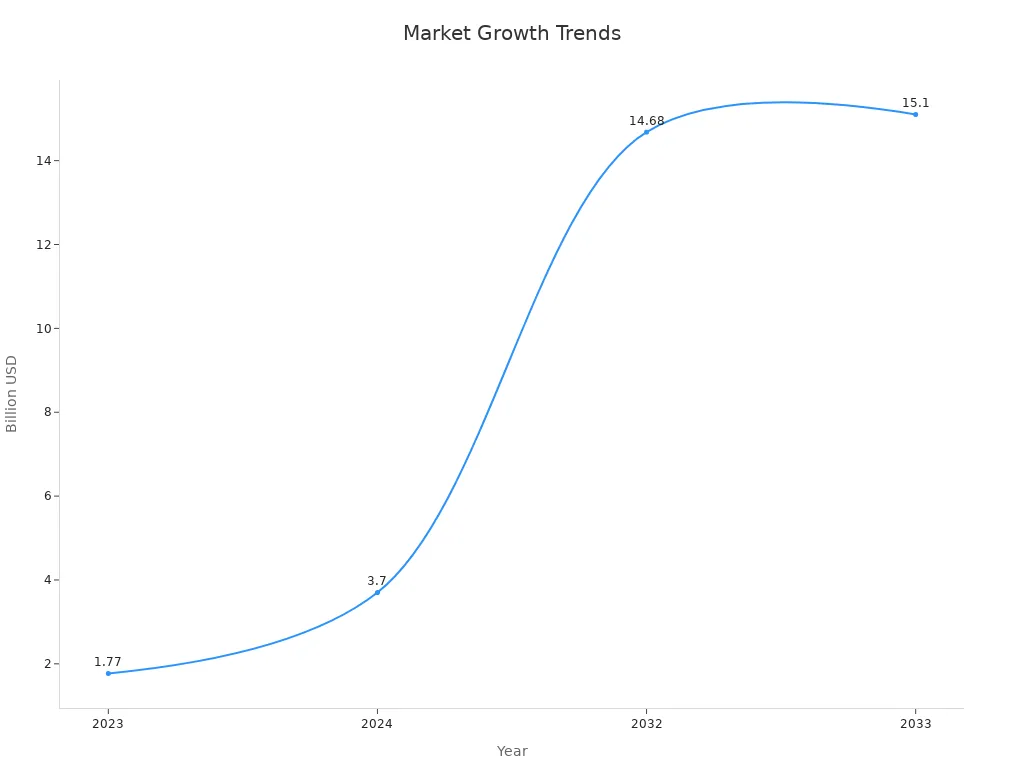
Retailers see these smart carts as a way to improve store operations and meet growing demand for contactless shopping.
Key Takeaways
Mobile shopping carts use smart technology to make grocery shopping faster, easier, and more personal by showing real-time costs and offering personalized product suggestions.
These carts let you scan items as you shop and pay right at the cart, which saves time by skipping long checkout lines and reduces stress.
Smart carts help stores keep shelves stocked and manage inventory better by tracking items in real time, which means you find what you need more often.
The carts use strong security measures to protect your personal data and payment information, giving you a safe and private shopping experience.
Stores must prepare well by training staff, choosing the right technology, and testing the system to ensure smart carts work smoothly and improve your shopping trip.
Mobile Shopping Carts Overview
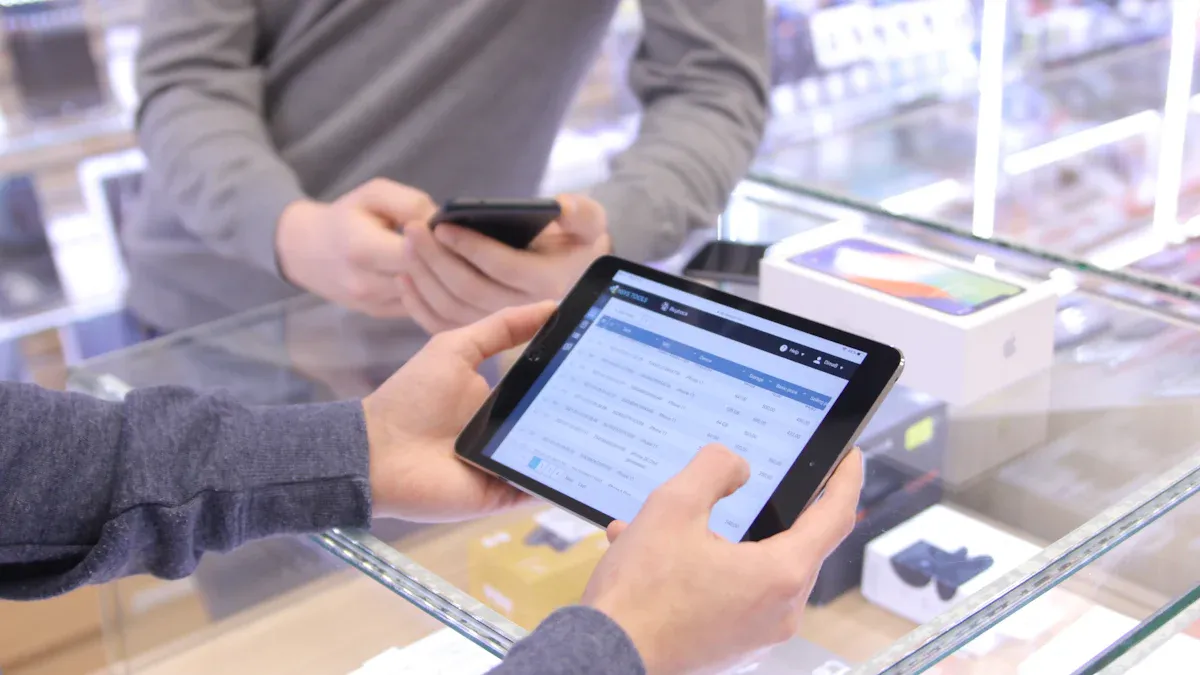
What Is a Smart Cart
You may have seen a smart cart in your local grocery store. A smart cart looks like a regular shopping cart but uses advanced technology to help you shop. These carts often have built-in screens, barcode scanners, and sensors. You can scan items as you add them to your cart, see your total cost in real time, and even get special offers while you shop. Many smart carts have payment systems, so you can check out right at the cart without waiting in line.
Smart carts are becoming more common in supermarkets, especially those with 100-200L capacity. This size makes them easy to use and move around the store. Retailers in the Americas, Asia-Pacific, and Europe are investing in smart carts to improve shopping convenience and support contactless payments. The market for smart carts is growing fast. In 2024, the market size reached USD 2.24 billion, and experts expect it to hit USD 9.74 billion by 2030, with a compound annual growth rate of 27.59%. The demand for smart carts comes from shoppers who want a faster, easier, and more personal grocery experience.
Metric | Value |
|---|---|
Market Size 2023 | USD 1.76 billion |
Market Size 2024 | USD 2.24 billion |
Projected Market Size 2030 | USD 9.74 billion |
CAGR | 27.59% |
Key Technologies | Bar Codes, RFIDs, ZigBee |
Technology Behind Mobile Shopping Carts
Smart carts use many types of technology to make your shopping trip better. You will find hardware like camera modules, payment systems, touchscreen displays, and weight sensors. These tools help you scan products, track your spending, and pay quickly. Software in smart carts uses AI to give you personalized promotions and help you find items in the store. IoT connectivity lets the cart update inventory in real time, so you always know what is in stock.
Retailers use technology like RFID and barcodes to speed up checkout and improve tracking. Some smart carts use blockchain encryption to keep your payment information safe. Companies also use data analytics to offer you personalized recommendations. For example, a fashion retailer saw a 35% increase in average order value after using data analytics in their mobile shopping carts. Other stores use technology to reduce cart abandonment and improve customer satisfaction.
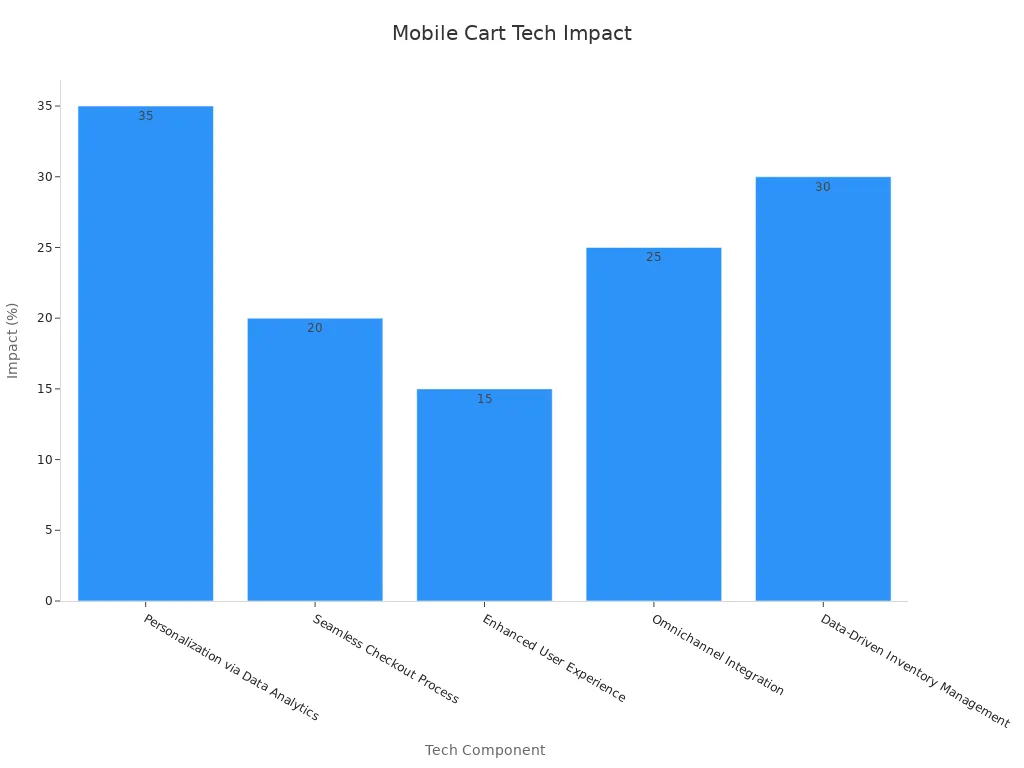
You can see that technology is changing the way you shop for groceries. Smart carts help you save time, control your budget, and enjoy a smoother retail experience. As more stores adopt mobile shopping carts, you will see even more features and benefits in your local grocery store.
Features
Real-Time Cost Tracking
Smart carts let you see your spending as you shop. You scan each item before placing it in your cart. The screen shows your total cost in real time. This feature helps you stay within your budget and avoid surprises at checkout. Market research shows that real-time cost tracking changes how you shop.
Budget shoppers often spend more and choose national brands when they see their spending live.
Nonbudget shoppers may spend less and switch to store brands.
Real-time feedback also makes budget shoppers more likely to return to the store.
Transaction convenience alone does not always increase purchase intent, but real-time updates help you feel in control.
Smart carts use barcode scanners, weight sensors, and digital displays to make this possible. These tools give you instant feedback and help you manage your money better.
AI and Personalization
Smart carts use artificial intelligence to make your shopping trip unique. The cart learns your preferences and suggests products you might like. You get special offers and reminders based on your past choices. Personalization makes shopping faster and more enjoyable.
Statistic Description | Value | Source |
|---|---|---|
Customers ready to pay for personalized products or services | Deloitte | |
Revenue increase from personalization | 40% | McKinsey |
Sales increase via predictive analytics (Amazon example) | Up to 35% | Amazon example |
Open rate of abandoned cart reminder emails | 44% | Research cited |
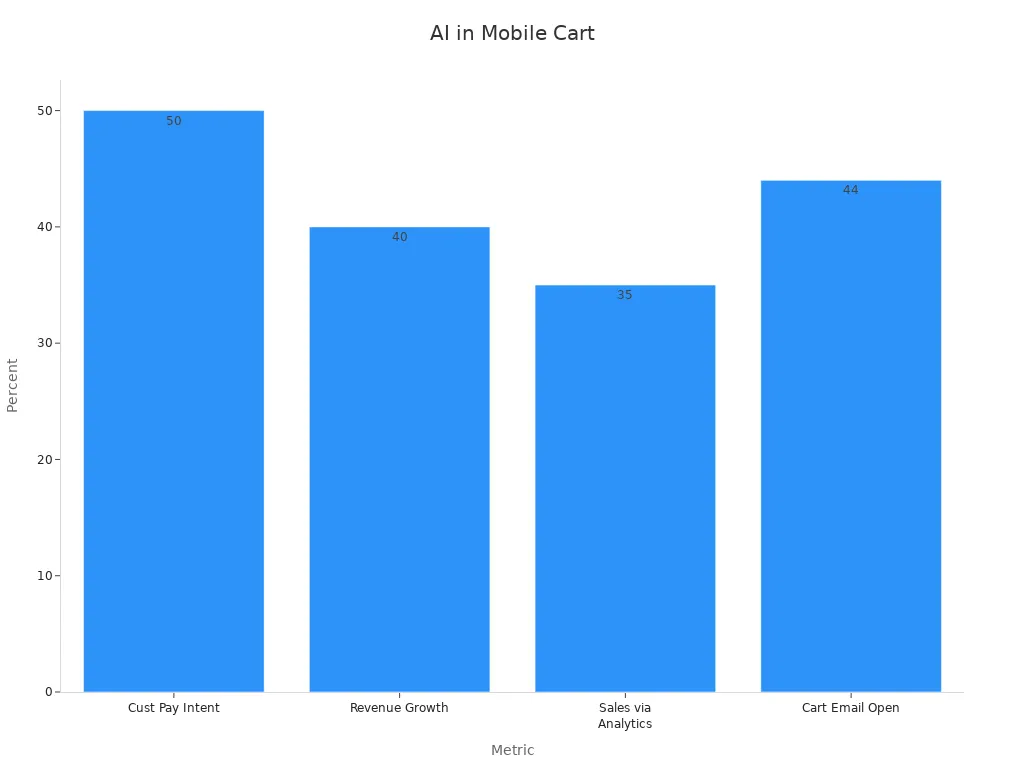
You benefit from smart technology that remembers your favorite brands and helps you find new products. Stores see higher sales and more loyal customers. Many shoppers expect this level of personalization and feel frustrated when it is missing.
Payment Integration
Smart carts offer seamless payment right at the cart. You do not need to wait in line or move to a separate checkout area. The cart connects with secure payment systems, so you can pay with a card, phone, or digital wallet. This frictionless checkout saves you time and reduces stress.
Integrated payment systems log transactions and match invoices automatically, which reduces errors.
Payments process instantly, so you get fast financial tracking.
Security features like encryption and tokenization protect your data.
Payment data syncs with inventory and accounting systems, making store operations more efficient.
You enjoy a smooth, secure, and fast checkout experience.
Stores use trusted providers like Stripe and Square to make payment integration reliable and easy to scale. This smart technology helps both you and the retailer.
Navigation and Store Mapping
Smart carts help you find products quickly. The cart’s screen shows a map of the store and guides you to each item on your list. You save time and avoid wandering the aisles. Target’s in-store navigation app uses this technology to reduce search time and make shopping easier. Retailers who use these features see a 15% drop in cart abandonment rates.
Smart carts use indoor mapping, GPS, and AI to track your location in the store. The cart can even suggest the fastest route to finish your shopping. Stores use heatmaps from smart technology to improve layouts and make shopping more comfortable for you.
Tip: Use the store mapping feature to plan your trip and avoid missing any items on your list.
Gamification and Engagement
Smart carts make shopping fun by adding game-like features. You can earn points, badges, or rewards for scanning items, trying new products, or finishing your shopping list. These features boost your engagement and make you want to come back.
Study (Author, Year) | Gamification Elements Used | Key Findings Related to Customer Engagement in Retail Environment |
|---|---|---|
Insley & Nunan (2014) | Points, badges, challenges | Gamification increases motivation, engagement, and loyalty in online retail. Gamification draws consumer attention and enhances online experience. |
Hamari et al. (2014) | Game mechanics, rewards | Gamification is a critical market strategy that positively affects customer engagement and brand attitude. |
Shi et al. (2022) | Rewards, competition, challenges | Gamification encourages repeat purchase intentions and attitudinal loyalty toward services. |
You feel more motivated to shop and interact with the store. Gamification also helps you remember the brand and builds loyalty over time.
Security and Privacy
Smart carts use advanced technology to keep your data safe. Blockchain-based systems store your information across many secure nodes. This method protects your data from hackers and prevents single points of failure. Encryption and digital signatures add extra layers of security.
A recent survey found that 79% of people take steps to protect their mobile data, such as using two-step authentication. More shoppers now use security software and take extra precautions. Even with these measures, some people still worry about privacy. Smart carts address these concerns by using strong security features and giving you more control over your data.
Smart technology in mobile shopping carts combines usability, safety, and privacy. You get a frictionless checkout, personalized offers, and a secure shopping experience. These features work together to make your trip to the store smarter and more enjoyable.
Shopping Experience
Convenience for Customers
You want your shopping experience to be easy and smooth. Mobile shopping carts help you find products quickly and avoid empty shelves. Real-time stock tracking means you rarely see out-of-stock items. You can also get updates on promotions and discounts as you shop. These features make your grocery trips more enjoyable and efficient.
Smart cart technology improves many parts of the customer experience. You can see the benefits in the table below:
Metric | Improvement |
|---|---|
Reduction in Stock-Out Issues | 67% |
Reduction in Inventory Discrepancies | 60% |
Decrease in Reconciliation Time | 50% |
Stock Accuracy Improvement | 30% |
Increase in Productivity | 25% |
Gain in Space Usage | 20% |
Improvement in Stock Use Efficiency | 30% |
Increase in Sales Performance | 15% |
You get more convenience because you spend less time searching for products and more time enjoying your shopping experience.
Faster Checkout
Long lines at the checkout can ruin your shopping experience. Mobile shopping carts let you scan items as you shop and pay right at the cart. This frictionless checkout saves you time and reduces stress. You can use digital wallets, cards, or even biometric authentication for secure payments.
Tip: Use the self-checkout feature to skip the line and finish your grocery trip faster.
Market research shows that checkout optimization increases conversion rates by 35.62%. Shoppers are 40% more likely to abandon their carts if they cannot use their preferred payment method. When you use a mobile shopping cart, you enjoy a faster, more flexible checkout process.
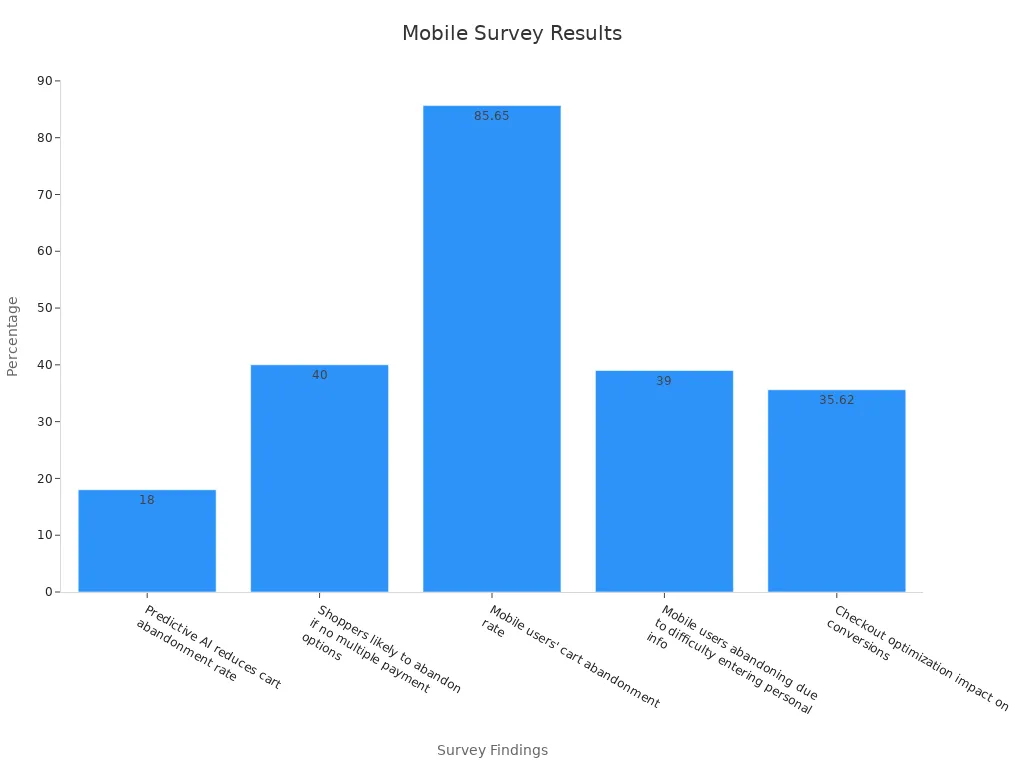
Personalized Recommendations
You want a shopping experience that feels unique to you. Mobile shopping carts use AI to give you personalized recommendations based on your past purchases and preferences. These suggestions help you discover new products and save money with special offers.
Amazon’s mobile app uses banners and carousels to show you products you might like. This approach has led to a 74% increase in conversion rates. When you receive recommendations that match your needs, you feel more satisfied and are more likely to return for your next grocery trip.
Note: Personalized recommendations make your shopping experience more enjoyable and help you find exactly what you need.
Efficiency and Store Operations
Inventory Management
You can see how mobile shopping carts transform inventory management in retail stores. These smart carts track every item in real time, which improves inventory accuracy and reduces errors. When you add products to your cart, the system updates inventory data instantly. This process helps you avoid stockouts and ensures shelves stay full. You also help stores reduce inventory shrinkage because RFID technology tracks stock movement and prevents theft.
Smart carts capture shopping patterns, which helps optimize inventory levels.
Data from these carts improves replenishment, fill rate, and perfect order rate.
You help reduce lost sales ratio by supporting better demand forecasting.
Inventory turnover increases as stores use insights from your shopping trips.
Retailers benefit from these improvements because they can keep products available and reduce waste.
Data Insights
Smart carts collect valuable customer data during every shopping trip. You help generate data that stores use to improve operational efficiency. By analyzing your shopping patterns, retailers can optimize store layouts and marketing strategies. The software in smart carts held a 57.3% market share in 2022, showing how important integrated technology is for operational efficiency.
Data insights help retailers understand which products you like.
Stores use this data to create targeted promotions and reduce food waste.
Retailers can also use customer data to highlight items nearing expiration, which supports sustainability.
You benefit from a better shopping experience, and stores use data to make smarter decisions.
Staff Optimization
Mobile shopping carts automate checkout and item scanning, which means staff can focus on helping you and restocking shelves. This shift increases productivity and improves customer service. AI-powered scheduling uses data to match staff levels with busy times, improving forecast accuracy by up to 35%. When stores use these systems, they can reduce labor costs and wait times during peak periods.
Key workforce efficiency metrics include schedule adherence, peak period productivity, and labor cost as a percentage of revenue. By monitoring these metrics, retailers can adjust staff schedules to meet your needs. You get faster service, and employees feel more engaged in their roles.
Note: Smart carts allow stores to repurpose cashier staff to more valuable tasks, which boosts operational efficiency and enhances your shopping experience.
Customer Benefits
Budget Control
You want to manage your money while shopping. Mobile shopping carts help you do this by showing a running total of your expenses on the cart’s screen. You can see how much you spend as you add each item. This feature makes it easier to stick to your budget and avoid surprises at checkout.
The cart syncs with your shopping list, so you can track both items and costs in real time.
Many shoppers use digital coupons right from the cart, which helps you save money.
Interactive features encourage you to shop mindfully and focus on what you need.
Experts say that seeing your spending as you shop makes you more aware and helps you control your budget.
Real-time cost tracking gives you transparency and builds trust in your shopping experience.
You can adjust your purchases on the go, prioritize essentials, and use coupons with just a tap. This level of control supports a smarter shopping experience for every customer.
Reduced Wait Times
Long lines can make any shopping trip stressful. Smart carts let you scan items as you shop and pay right at the cart. You skip the checkout line and finish your trip faster. This technology gives you more time to enjoy your day and less time waiting.
You can use digital wallets, cards, or even your phone for quick payments.
The cart’s system processes your payment instantly, so you leave the store without delay.
Staff can focus on helping you instead of running registers, which improves the overall experience.
Your shopping experience becomes smoother and more efficient. You spend less time waiting and more time enjoying your purchases.
Enhanced Satisfaction
A great shopping experience leaves you feeling happy and valued. Mobile shopping carts improve your satisfaction by making every step easier and faster. Surveys show that customers feel more satisfied when they can find products quickly, check out easily, and get help when needed.
Efficiency in searching, ordering, and paying is the biggest driver of satisfaction.
Responsive technology addresses your needs right away, which makes you feel heard.
These features lead to more frequent purchases and stronger loyalty.
Many customers share their positive experiences online, which helps others choose smart stores.
You get a convenient, accessible, and time-saving shopping experience. When you feel satisfied, you are more likely to return and recommend the store to friends.
Smart Cart Implementation
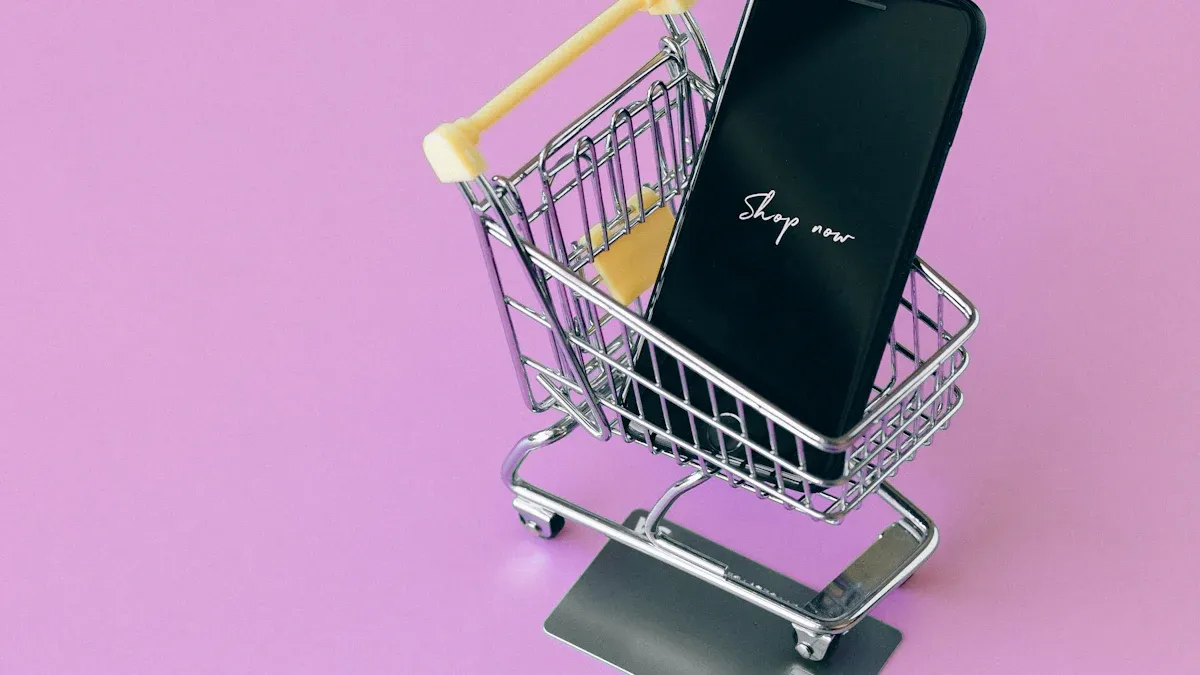
Assessing Readiness
You need to check if your store is ready for a smart cart system. Start by looking at your current technology and staff skills. Make sure your team knows how to use new equipment and can handle smart devices.
Here are some important steps for readiness:
Review your staff training and make sure everyone understands their roles.
Check that smart carts and related equipment are easy to reach and use.
Organize your cart contents and label everything clearly.
Set up a plan for restocking and replacing items.
Track any problems or unsafe incidents to improve your process.
Involve all departments, like inventory and IT, in your planning.
Hold regular training and practice drills for your team.
These steps help you avoid problems and keep your smart cart system running smoothly.
Solution Selection
Choose a smart cart solution that fits your store’s needs. Look for systems that use IoT, RFID, and AI to scan items and update prices automatically. The best smart carts use cloud and fog computing to process data quickly and securely.
Pick a solution that supports real-time scanning, easy billing, and strong security. Make sure the system can grow with your business and handle busy shopping times.
System Integration
You must connect your smart cart system with your store’s POS and inventory software.
Follow these steps for successful integration:
Sync inventory data in real time between your smart carts and central systems.
Test connections with barcode scanners, payment devices, and loyalty programs.
Make sure your payment system is secure and works with your accounting software.
Run tests to check that everything works during busy hours.
Stores that do this well see a big drop in staff-customer contact and a boost in sales. Smart carts also help you manage data across many stores at once.
Training and Education
Teach your staff and customers how to use smart carts. Use simple guides, videos, and hands-on practice.
Tips for success:
Hold training sessions for staff on smart cart features.
Show customers how to scan items and pay at the cart.
Offer support in the store for anyone who needs help.
Good training helps everyone feel confident and makes the smart shopping experience better.
Testing and Scaling
Test your smart cart system before using it in every store. Start with a small group of carts and watch for problems.
Check that the system scans items correctly, updates inventory, and processes payments.
When you see good results, add more smart carts and expand to other locations.
Keep checking performance and make improvements as needed.
Tip: Use feedback from staff and customers to make your smart cart system even better.
Mobile shopping carts change how you shop and help stores work better. You get a smoother shopping experience and faster service. These carts give you more control and make each visit feel special. Smart stores use this technology to stay ahead and meet every customer need. If you want to improve your store, start with a pilot program and keep checking your results for the best experience.
FAQ
How do you use a mobile shopping cart?
You scan each item’s barcode as you add it to your cart. The screen shows your total cost. When you finish shopping, you pay right at the cart using your card or phone. Staff can help if you need it.
Are mobile shopping carts safe for your personal data?
Yes. Smart carts use encryption and secure payment systems. Your information stays private. Many carts use extra security steps, like two-factor authentication. You control your data and can ask for help if you have questions.
What happens if you need help while using a smart cart?
You can press the help button on the cart’s screen. Staff will come to assist you. Many stores also have guides or videos to show you how to use the cart.
Can you use coupons or loyalty points with a mobile shopping cart?
Yes. You can scan digital coupons or enter your loyalty number on the cart’s screen. The system applies discounts automatically. You see your savings in real time.
See Also
Transforming Online Store Management With AI E-Commerce Tools
Modern Retail Advantages Of AI-Driven Combo Vending Machines
The Future Of Retail Lies In AI-Powered Stores
Smart Stores Becoming The Future Trend In Convenience Retail
Revolutionizing Retail Through Smart Electronics Vending Machines
